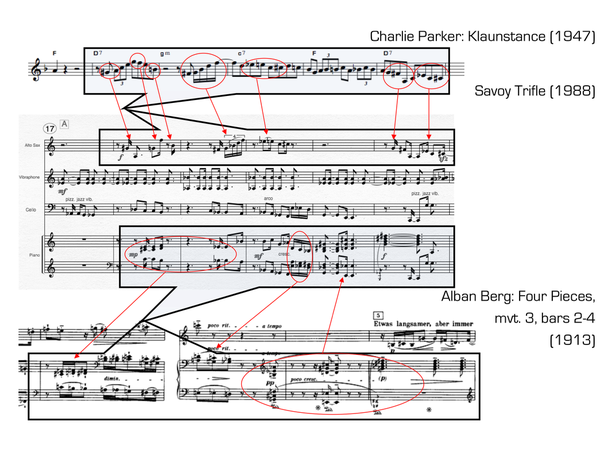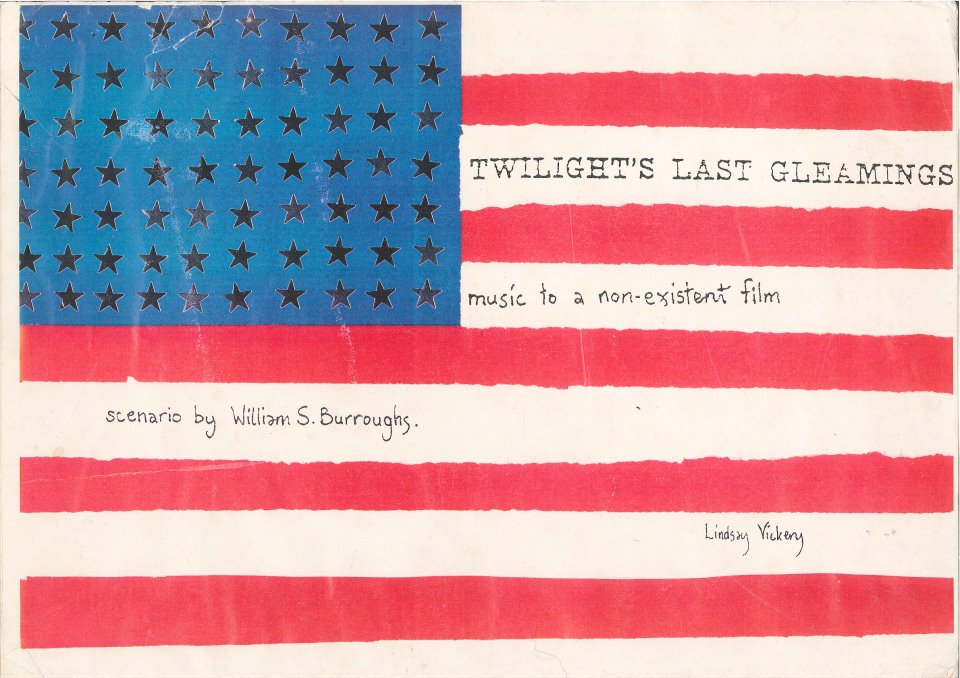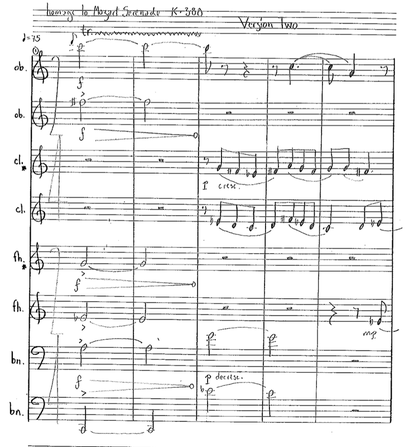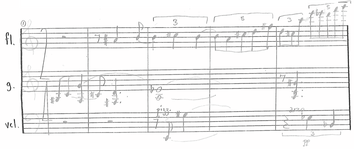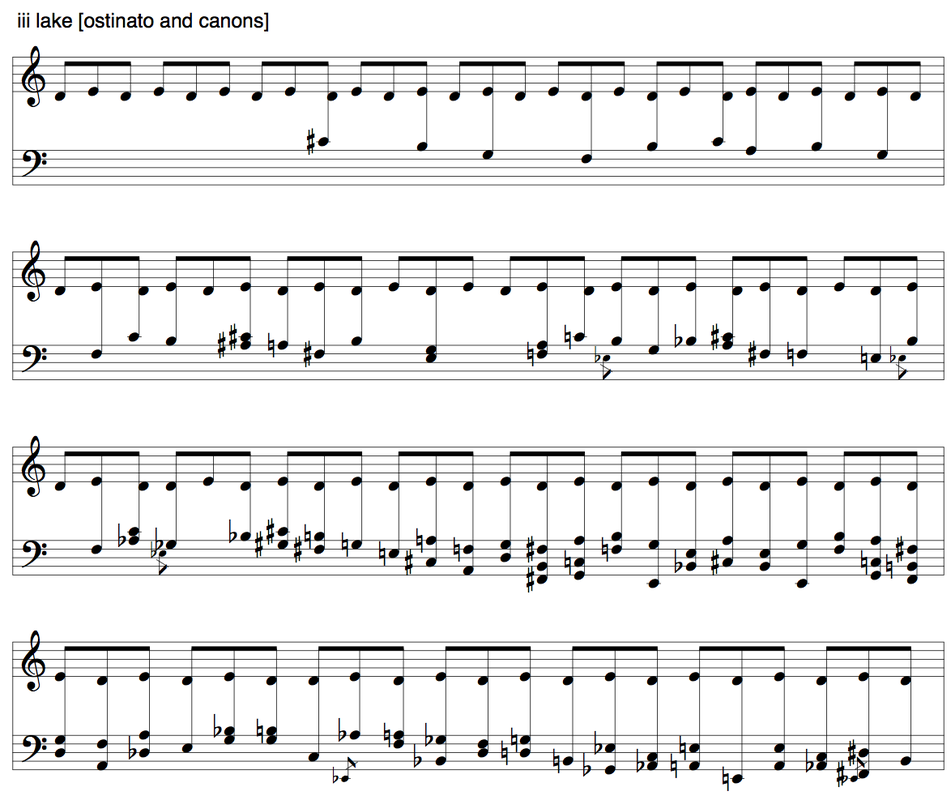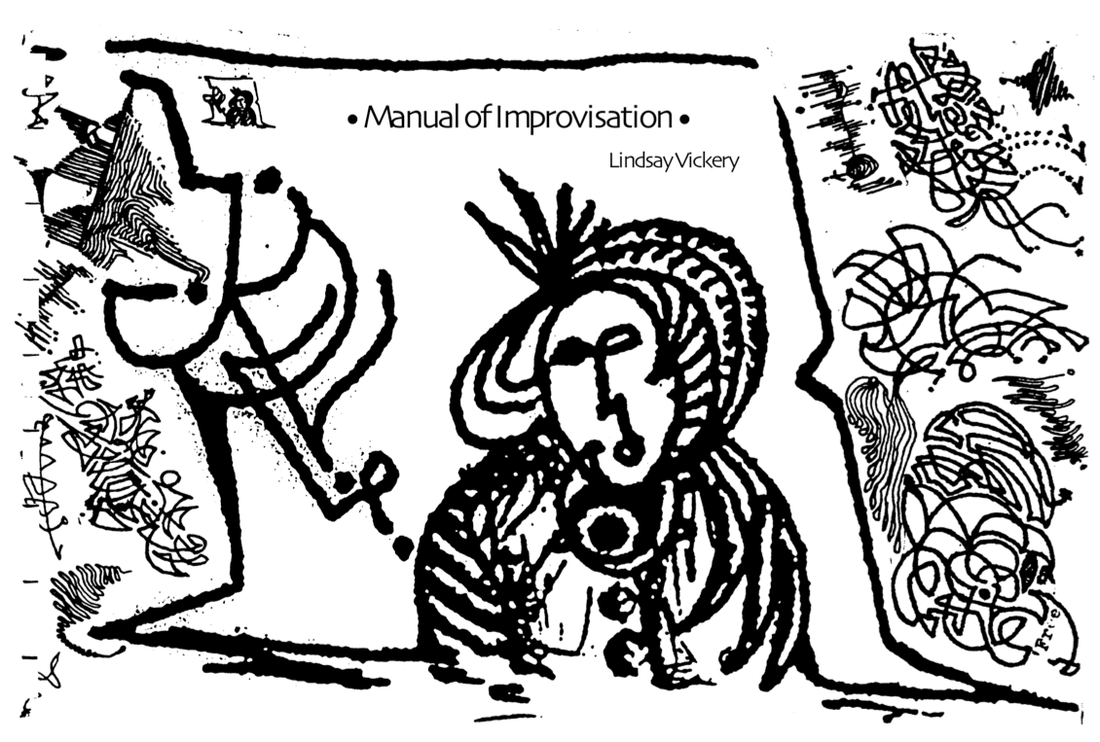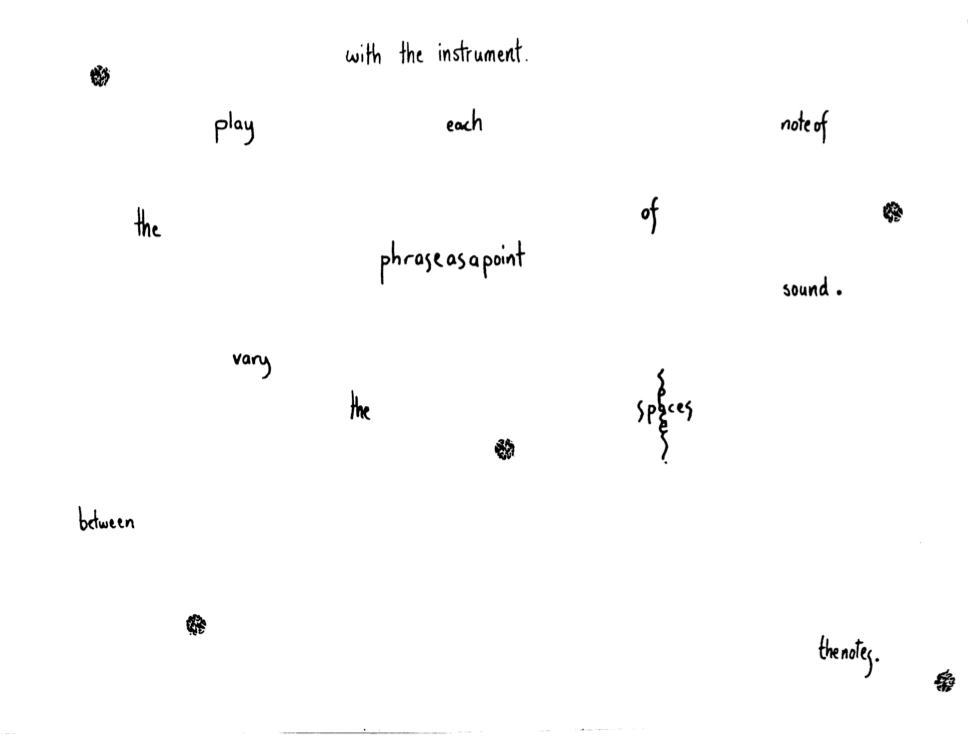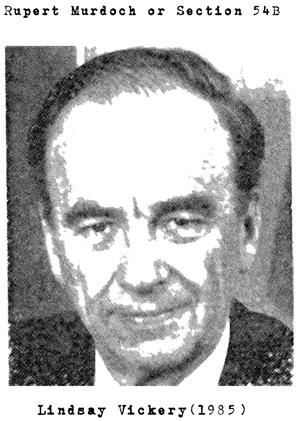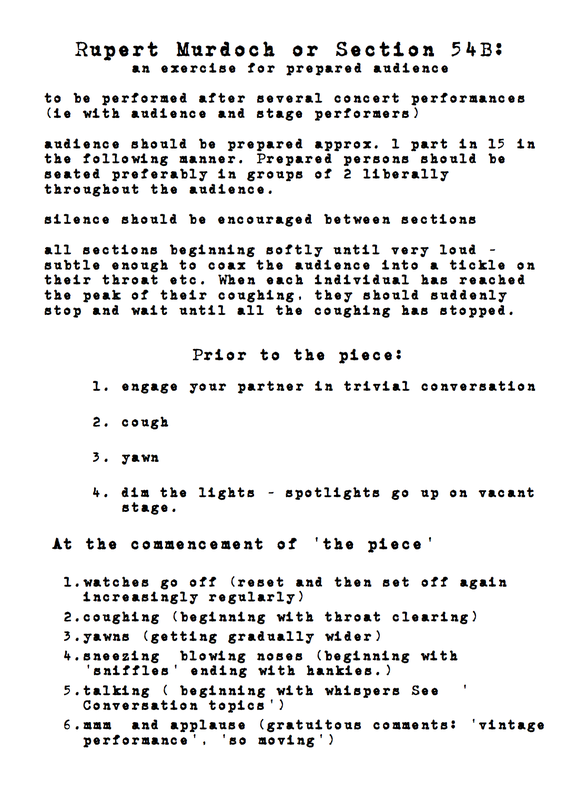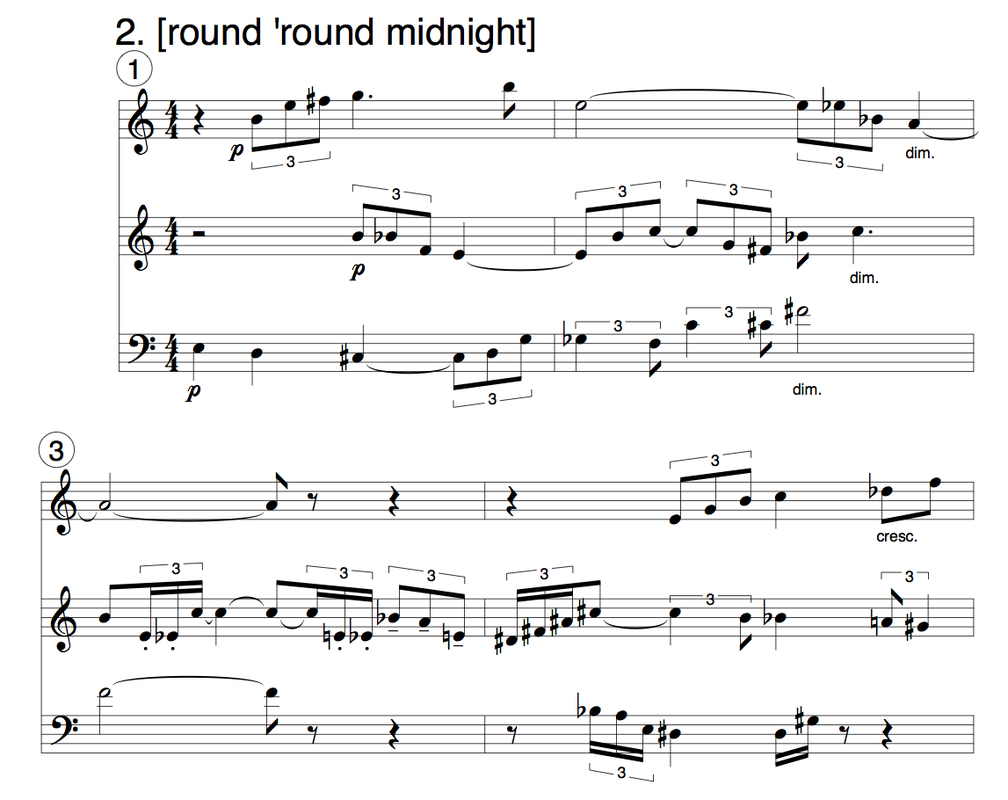1988
8 Savoy Trifle [1988} a. sax, perc. and pno 8m
|
Savoy Trifle was written for Alea New Music Ensemble and premiered at our inaugural concert on my birthday in 1988. It comes from a period where I was exploring collage and quotation and different ways of integrating and juxtaposing diverse materials. In this case those materials were Be-bop Saxophonist Charlie Parker's (1920-55) Klaun Stance and Viennese Expressionist Alban Berg's (1885-1935) Four Pieces for Clarinet and Piano Opus 5. Savoy Trifle derives its structure from the improvised saxophone leadline of Parker's piece. The pitches of the leadline are a constant throughout the work, and serve as the basis for a compositional improvisation liberally scattered with remarkably post-be-bop passages from Berg's 1913 pieces. Sketches for Savoy Trifle show the evolution of the title as Savoy Artefact ('Savoy' was Parker's record label), Savoy Truffles (after the Beatles song 'Savoy Truffle') and finally in very faint pencil, Savoy Trifle. The score was subtitled with a quote from the same Beatles song: 'you'll have to have them all pulled out', which still turns out to be good advice for the performers.
|
1986
|
7 Twilight's Last Gleamings [1986] four melody instruments 5m
Twilight's Last Gleamings was written as film music for a non-existent feature proposed by William Burroughs in his novel Exterminator. The film concerns a conspiracy to blow up a train carrying nerve gas by an unlikely band of American minority groups. The conspiritors plan fails, but their mission succeeds posthumously when in an unconnected accident, a truck driver on LSD crashes a load of high octane fuel into the train, releasing nerve gas across East Coast USA. This little piece accompanies the closing moments of the film... "Film closes with 'The Star Spangled Banner' played softly in a minor key as the camera shows aerial view of dead cities with flash close-ups through the Telstar. The camera is farther and farther away, and the music always fainter. Lat shot show ghost faces of the conspirators against a gleaming empty sky. They wave and smile." Twilight's Last Gleamings: William Burroughs |
|
6 A Feather Net to Catch the Stringed Birds [1986] Flute, Guitar and Cello 4m
This short work explores a number of textural-timbral qualities of the flute, guitar and cello. The harmonic content derives from a curious blend of Hindemithian quartial harmony and post-serial structuring. The title (added in 1989: it was originally called 'piece') comes from Breton and Soupault's proto-surrealist work The Magnetic Fields a work I was later to draw from more heavily for the text of my song cycle Vo. 5 Octet for Winds 1986 2 Oboes, 2 Clarinet, 2 Horns and Bassoons 12m
Octet is one of a number of my works from this time that take existing musical works as a starting point. The work in question here is Mozart's Serenade in C Minor KV 388 'Nacht Musique'. The octet's three movements develop material from the 1st, 2nd and 3rd movements of the Mozart work. The fragments were chosen for their chromatic content or interesting shape. |
1985
2 rupert murdoch or section 54b [1985] for audience ±7m
|
1 woodwind trio [1985] oboe clarinet and bassoon 9m
Woodwind Trio, reflects a number of my musical interests at this time. The first and third movements are curious chromatic and slightly poly-rhythmic ricecars (this trio also played a lot of early english music: Matthew Locke etc). The second movement is essentially a deconstruction of Thelonius Monk's 'Round Midnight'. The third inspired by the cheeky woodwind writing of Neo-Classicist Jean Francaix and the last movement a tocatta with fibonacci based phrases and a nod to Bartok. |

